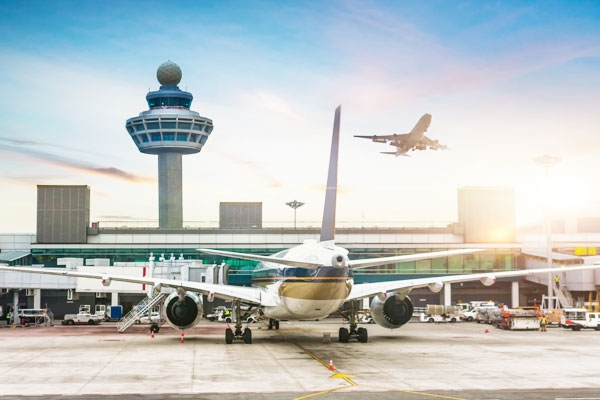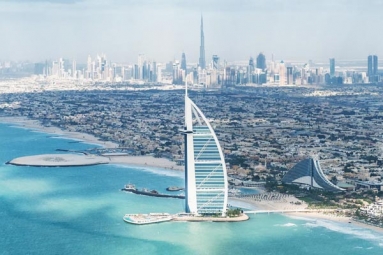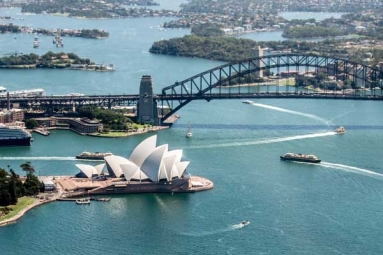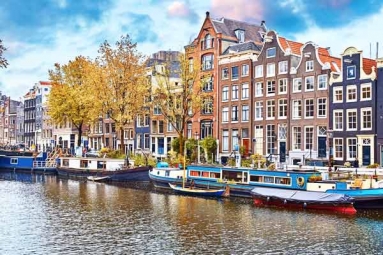
(Image source from: Canva.com)
A distinguished new list showcasing the world's most stunning airports for 2025 has recently been revealed in Paris. This selection is made by the Prix Versailles committee. This yearly award emphasizes excellence in architecture throughout the travel industry worldwide. Six airports and terminals have been highlighted for their exceptional design, commitment to sustainability, and cultural significance. It’s important to note that this list is not in any specific order. According to Prix Versailles, these airports embody a mix of operational, environmental, and visual achievements. Later this year, three of these terminals will also be honored with individual World Titles (Prix Versailles, Interior or Exterior). Prix Versailles is an international series of awards that acknowledges architectural successes in various categories every year. Since their start in 2015, these awards have been presented at UNESCO. Here are the Six Most Beautiful Airports in the World for 2025:
Yantai Penglai International Airport (Terminal 2) in Yantai, China: The recently launched Terminal 2 of Yantai Penglai International Airport pays homage to the stunning coastal scenery of the area. Designed by Aedas along with CSWADI and the Shanghai New Era Airport Design Institute, the roof design reflects the gentle curves of Kunyu Mountain. The E-shaped layout of the terminal allows for smooth passenger movement. A high, glass dome tops the multi-story atrium, letting plenty of sunlight in. Inside, the design features nautical themes, with curved spaces resembling ship hulls, honoring the Maritime Silk Road. The terminal covers 167,000 square meters and aims to symbolize openness for the Shandong Peninsula.
Marseille Provence Airport (Terminal 1) in Marignane, France: A significant renovation has revitalized Terminal 1 at Marseille Provence Airport. The central “Coeur” (Heart) extension, designed by Foster + Partners, spans 22,000 square meters. Constructed with 70% recycled steel, it rises to 22 meters and includes skylights and sleek aluminum surfaces. Wooden features pay homage to the boat houses of Marseille’s Old Port. The project also restored 28,000 square meters of area, maintaining Fernand Pouillon's original structure from the 1960s while incorporating upgrades by Richard Rogers. Now, passengers pass through a welcoming, wood-covered security area and can take in views of the picturesque inland countryside on one side and the coastal lagoon on the other.
Roland Garros Airport (Arrivals Terminal) in Reunion Island, France: Nestled amid the lush scenery of Reunion Island, the 13,000-square-meter Arrivals Terminal at Roland Garros Airport stands out as the first bioclimatic airport building of such size in a tropical setting. Crafted by AIA Life Designers, the terminal makes use of local talent, with 91% of the work being done by nearby companies. A central "canyon" shape not only sets the terminal’s design but also acts as a natural air ventilation system. The shutters contain sensors that adjust to changes in weather, allowing real-time airflow control. The interior design incorporates wood and native plants to echo the island's natural beauty and cultural essence.
Kansai International Airport (Terminal 1) In Osaka, Japan: Initially designed by the famous architect Renzo Piano, Kansai International Airport has become a landmark, built on a man-made island in Osaka Bay. Its Terminal 1 holds the title for the longest airport terminal worldwide. Recently, Populous has redesigned Terminal 1 to get it ready for future expansion. This renovation has increased the international capacity by 25% while keeping the terminal’s elegant roofline and modern design. Inside, natural materials provide a uniquely Japanese feel. A smart queuing system has been introduced to improve the experience for travelers.
Portland International Airport (Main Terminal) In Portland, United States: ZGF's redesign of the Main Terminal at Portland International Airport embodies the essence of Oregon's forests. There is a grand timber roof that covers over 36,000 square meters. The materials were obtained from within a 500 km radius. A "forest to frame" tracking system was employed to trace the wood back to its sources. Nature-inspired features, lots of natural light, and beautiful views contribute to a peaceful atmosphere. The terminal's interior is arranged like a set of connected rooms, reflecting the lively pace of Portland itself. This is a change that combines eco-friendliness with tranquility.
San Francisco International Airport (Terminal 1) In San Francisco, United States: The recently remodeled Terminal 1 at San Francisco International Airport showcases environmental advancements and cultural richness. Managed by Gensler and Kuth Ranieri, the project has decreased energy consumption by 59% and cut carbon emissions by 79%. The area is filled with soft natural light and features craftsmanship and art from the Bay Area. Home to the only accredited airport museum in the world, the terminal serves as a cultural display. It also honors Harvey Milk.
The six terminals chosen for 2025 represent various geographical areas and architectural designs. The final global awards will be revealed in December of this year.







